Long Bien Bridge in Hanoi: A Historical Icon and Tourist Destination
The Long Bien Bridge, which is in Hanoi, stands as one of the country’s most prideful symbols. Constructed throughout the French colonial period, the Bridge went on to feature significantly in the history of Vietnam and remains one of the biggest tourist draws in the present day. Learn with MOTOGO Tours more on the history and architectural value behind this must-visit location.
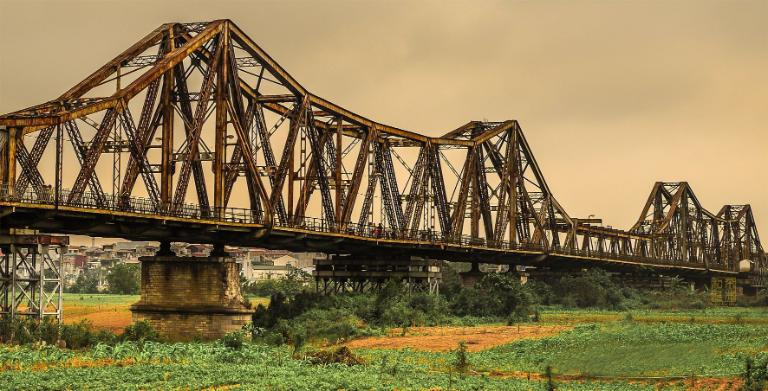
Historical Background of Long Bien Bridge
Through the Long Bien Bridge, historical landmark in Hanoi, runs the story deeply entrenched within the tumultuous history of Vietnam, literally and symbolically bridging eras of colonialism, war, and independence.
Colonial Era and Construction
Stretched across the Red River running through Hanoi, the Long Bien Bridge was completed in the years 1898-1902 and was a creation of none other than the celebrated French architect Gustave Eiffel, who had notable work credited under his name in the Eiffel Tower situated in Paris. This bridge, to the French, was considered a crucial artery for trade where the channels teemed with flowing commercial freight between the north and south regions of Vietnam.
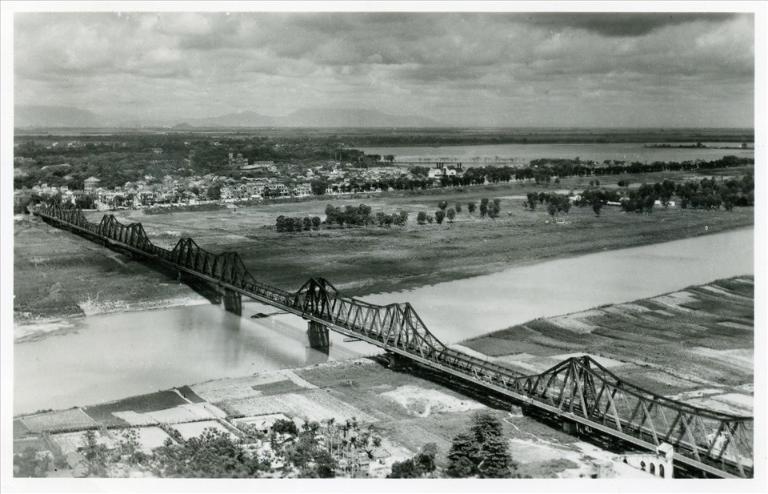
The bridge was originally named Paul Doumer Bridge, after the then Governor-General of French Indochina. Its completion marked a pivotal point in Hanoi’s modernization, making it one of the longest bridges in Asia at the time. The name “Long Bien Bridge” as we know it today was given to the bridge by Hanoi Mayor Tran Van Lai in 1945.
Role During the Vietnam War
The Long Bien Bridge was of great strategic interest during the Vietnam War and was also the most vivid target of American bombings. Destroyed many times in the bombing raids, it was rebuilt each time. The Long Bien Bridge came to symbolize to the Vietnamese their unconquerable spirit in the face of adversity. Walking on the bridge today, be sure to notice parts of the old construction damaged during the war and renewed after it: they’re a vivid reminder of the country’s history.
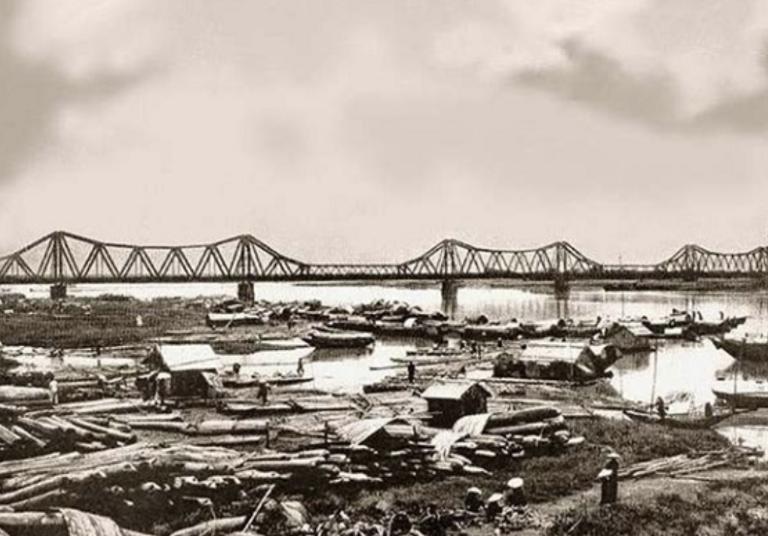
>>> Explore: History of Hanoi: A Journey Through Vietnam’s Capital
Architectural Significance of Long Bien Bridge
Crossing the Red River, the construction of the bridge was one ambitious blending of form and function that was somewhat revolutionary for the early 20th century. French engineered and constructed with materials imported from France, it symbolizes both colonial dominance and the technological advances of the era.
French Influence on Design
The Long Bien Bridge is an outstanding example of French colonial architecture, extremely strongly influenced by industrial design principles coming from Europe at that time. Mostly the construction of a French architect Gustave Eiffel, famous for the design of the Eiffel Tower, also had a significant part in the conceptualization of this monumental project, though directly his firm supervised the construction.
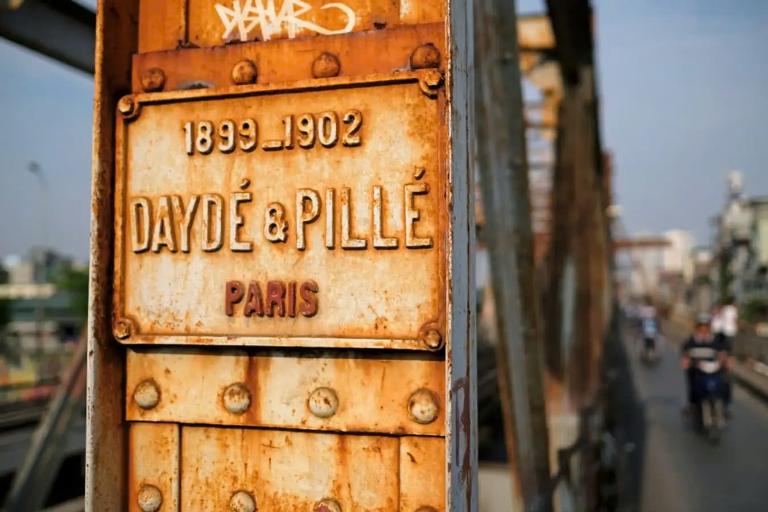
Its original design explicitly divided the usage on the three sections of the bridge: a railway track in the middle and the roadways for pedestrians and cyclists. A concept fed by this multi-purpose idea for the bridge to serve both freight and civilian traffic was an innovation that enabled the bridge to serve an industrializing Hanoi rapidly.
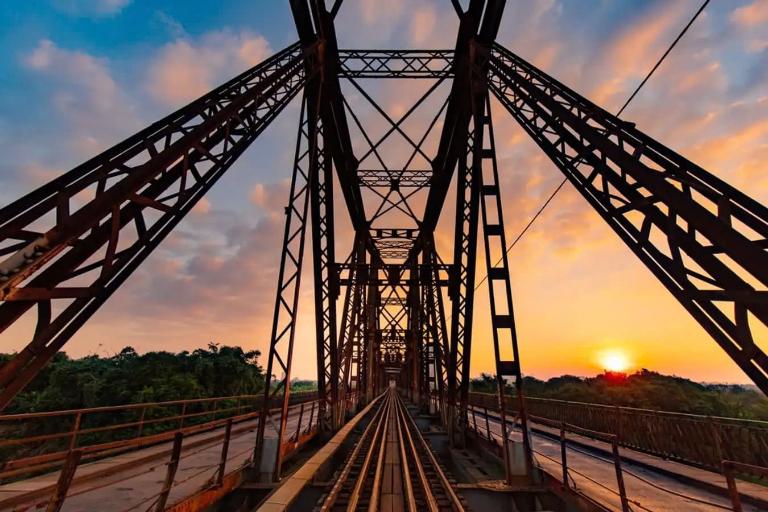
This type of symmetrical truss system applied to Long Bien Bridge is a legacy of French engineering practice of the late 19th and early 20th centuries. Because of such a system, all the loads acting on the structure are properly distributed over the entire bridge, making it possible even for the heaviest trains to travel over it, not yielding to the powerful flow of the Red River. Its design is both functional and aesthetic, representing the height of colonial-era engineering.
>>> Let’s see more: Tay Ho Palace: A Famous Spiritual Destination in Hanoi
Engineering Marvels of the Time
The Long Bien Bridge was then a work of technical marvel when built. With a total length of 2,29 kilometers, it was one of the longest bridges in Asia back in 1902. This bridge was constructed at a time when there was not much infrastructure in Vietnam; it represented technological progress and modernization as it linked northern and southern Vietnam via the railway.
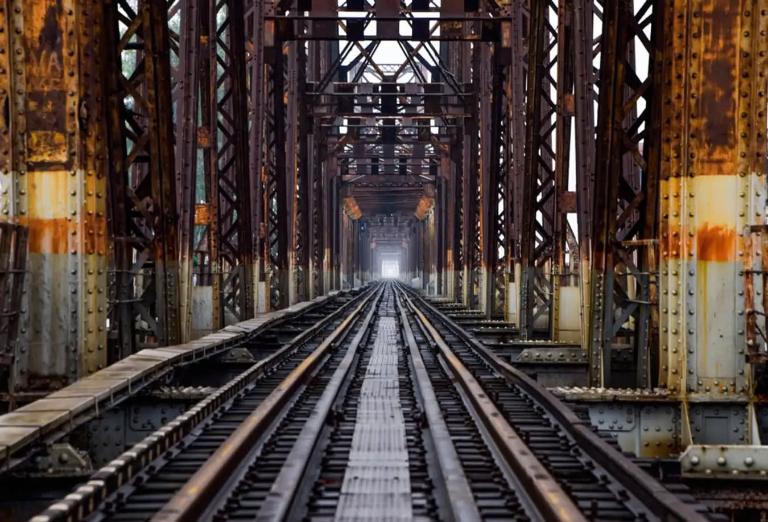
One of the Long Bien Bridge’s most remarkable engineering attributes was its aptitude to stand up to the adverse environmental conditions presented by the Red River. From the very beginning, its very fast currents and tendencies to cause floods made things very difficult for the construction activities for pillars of support of the bridge. French engineers, however, designed these very strongly to support such natural forces. These piers were anchored deep into the riverbed, the steel framework being able to resist both the hydrodynamic forces of the river and also the train’s weight.
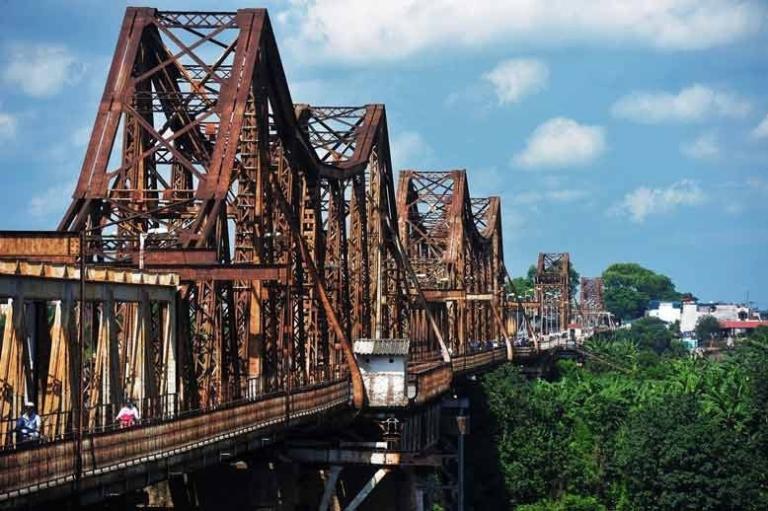
One notable aspect of the bridge at the time was its dual-use design, which allowed for both train and pedestrian traffic. Long Bien Bridge is still a functional component of Hanoi’s infrastructure more than a century after it was built because trains still pass over its central portion and people still use the side walkways for walking and bicycling.
Symbolic and Visual Impact
Long Bien Bridge’s aesthetic appeal extends beyond its practical layout. The bridge, which is frequently captured on camera, drawn, and preserved in books, has come to represent Hanoi’s culture and aesthetic identity. Photographers and artists alike love this location because of its arching steel girders, which, especially at sunrise or sunset, make an elaborate pattern against the sky.

The weathered steel, marked by rust and age, gives the bridge a vintage charm that contrasts with the modern city surrounding it. For many, the bridge represents a tangible link between past and present, a testament to both colonial ambition and Vietnamese endurance.
>>> Let’s see more: Hanoi Old Quarter: A Journey Through Time and Culture
The Role of Long Bien Bridge in Modern Hanoi
Even though time has long passed, Long Bien Bridge remains an integral part of Hanoi’s infrastructure and a cultural monument close to the hearts of its people.
A Connection Between Past and Present
As of now, Long Bien Bridge has become not only a sight but a symbol of Vietnam’s colonial past and road towards modernity. The new bridges took the load of traffic, but Long Bien received the title of one of the most important symbols of this city because the identity of the city was reflected back from it. Till today, the bridge is used as a railway link, in addition to passing pedestrians and cyclists, which embodies a nice juxtaposition of the old with the new.
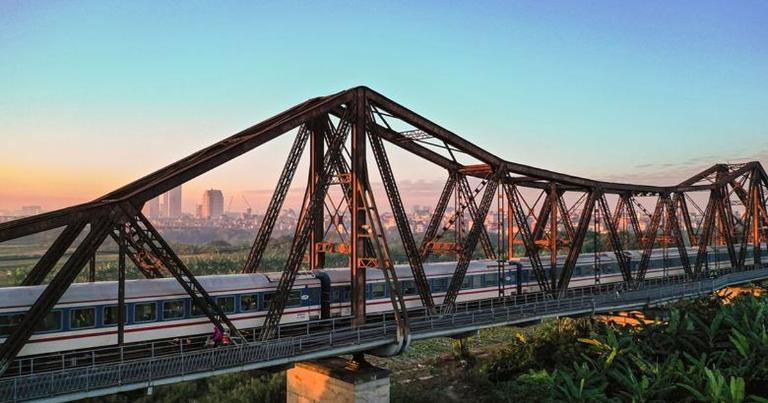
Tourist Attractions Around Long Bien Bridge
Long Bien Bridge is not far from the center of Hanoi, meaning there are many attractions nearby. Dong Xuan Market is just a short walk away; here, after seeing the local food market, you can pick up a few souvenirs. The Red River area is usually busy with boats and offers excellent scenery— great, especially during sunrise or sunset.
Long Bien Bridge Preservation: Challenges and Efforts
Long Bien Bridge’s age and historical significance make restoration a constant struggle.
Continuous Restoration Projects
The Long Bien Bridge has been protected as a historical and cultural asset through a number of initiatives. The Vietnamese government has started repair projects with the help of foreign groups in an effort to preserve the bridge’s original design while making it safer for usage in the present era. These initiatives concentrate on fortifying its framework without sacrificing its historical significance.
The Difficulties of Juggling Modernization and Preservation
Hanoi must strike a balance between the necessity for new infrastructure and the preservation of the Long Bien Bridge as the city grows. Although there are talks about constructing new roads and bridges to reduce traffic, there is also a strong desire to preserve Long Bien Bridge as a cultural icon. Hanoi will still have to grapple with how to reconcile development with preservation in the years to come.
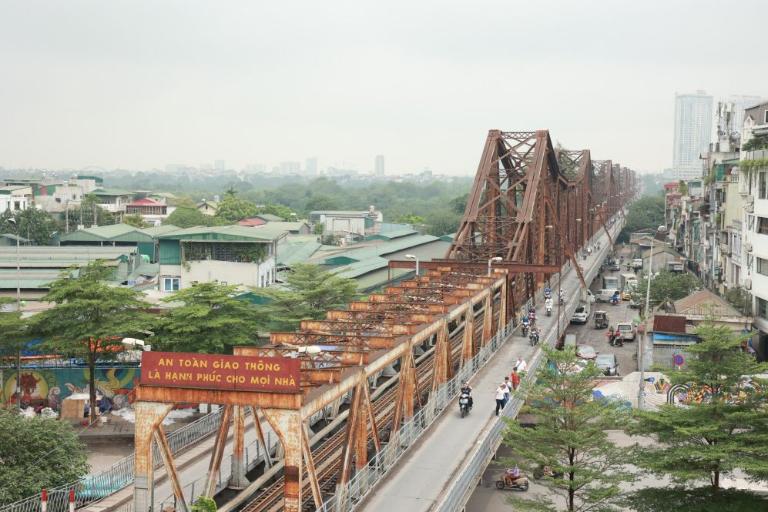
>>> You may also like: Hoan Kiem Lake: Explore Hanoi’s Historic and Cultural Heart
Visiting Long Bien Bridge and Having an Experience
It is not enough to only see history when visiting Long Bien Bridge; one must actually experience it.
The Best Occasions to See Long Bien Bridge
The ideal times to visit Long Bien Bridge are in the early morning and late afternoon. The Red River below and the city skyline in the distance are seen in this picture-perfect image of the surrounding countryside created by the illumination during these times. Additionally, there is typically less traffic on the bridge during these hours, making for a more tranquil experience for visitors.
Activities to Enjoy on Long Bien Bridge
You can enjoy sweeping views of the Red River and the Hanoi skyline by walking or riding across this bridge. While many tourists pause to snap pictures, others just take in the breeze and the slower pace of life that the bridge provides. A few people even offer drinks and refreshments, making it a nice place to stop for a little break and take in the history. It’s imperative for photographers to catch the sun setting over the bridge.
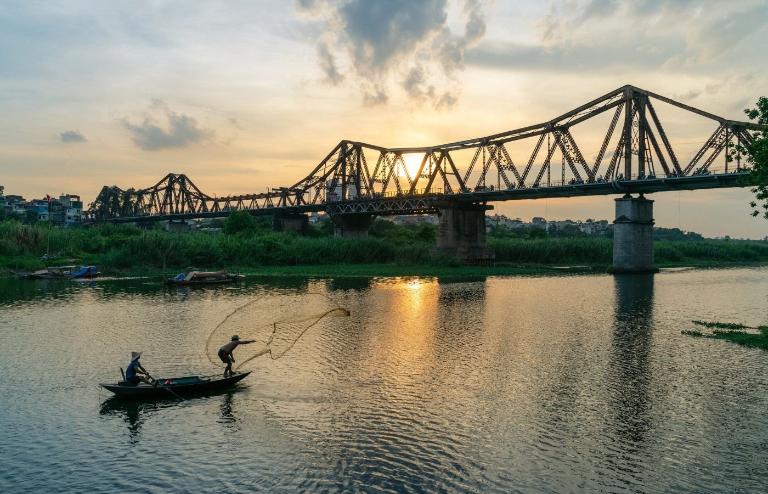
The Long Bien Bridge is a symbol of Vietnam’s history, present, and future. Its rust-colored steel beams bear the weight of time, and both residents and tourists are reminded of Vietnam’s tenacity by its unwavering presence. Long Bien Bridge provides a trip through time for those who cross it; every fissure and corroded fastener has a tale to tell.
Related Posts:
- Ba Vi National Park: Nature, Adventure & History Near Hanoi
- Hanoi Ceramic Mosaic Mural: A Masterpiece of Art & Culture
- Ba Dinh Square: A Journey Through Vietnam’s Historical Heart
- Discover the Timeless Charm of Duong Lam Ancient Village in Hanoi
- Van Phuc Silk Village in Hanoi: A Guide to Vietnam’s Silk Craft


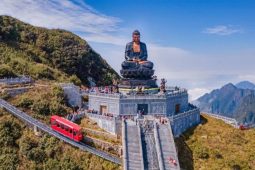

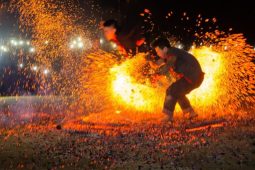


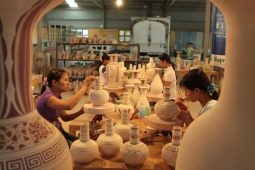
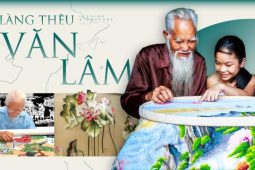





Be the first to comment!